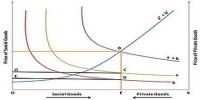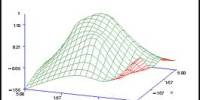Gross operational surplus (GOS) is the portion of income obtained from incorporated company production that is earned by the capital factor in national accounts. It is the trading account balance for productive units. It is calculated as a balancing item in the national accounts’ income generation account. It is calculated as value-added minus wages and other production taxes, plus operational grants.
Gross Operating Surplus (GOS) is the profit made by businesses on the goods and services they create after paying their employees. It is their income from production (Output) less the costs of raw materials, services, and overheads (Intermediate Consumption), as well as fewer labor costs (Compensation of Employees).
A brewer, for example, will purchase barley, hops, and yeast and turn them into beer, which they will sell for more than they paid for the ingredients. This profit from sales is their output. They will also have brewery overheads such as heat, light, and insurance. Intermediate Consumption is the cost of raw materials and other overheads. They then pay their staff, and the difference is their Gross Operating Surplus.
It differs from profits shown in corporate financial statements for various reasons. To compute the GOS, only a portion of total costs are removed from the gross output. GOS is essentially gross output less the cost of intermediary products and services (to obtain gross value added) and less employee remuneration. It is gross because it does not account for capital depreciation. The balance of the trading account is the mixed-income for sole proprietorships. After deducting the use of fixed capital, the gross operating surplus can be determined net.
Gross mixed income is a comparable idea for unincorporated firms (e.g., small family businesses like farms and retail shops or self-employed cab drivers, lawyers, and health professionals). Because it is difficult to discern between revenue from labor and income from capital in most circumstances, the balancing item in the income generation account is “mixed” by including both the remuneration of capital and labor (of family members and self-employed) used in production.
GDP is calculated using the income approach utilizing gross operating surplus and gross mixed-income. It is not entirely profit for the producer to spend as they see appropriate. It does not account for the wear and tears on the facilities and machinery utilized in the manufacturing process. We have Net Operating Surplus after deducting Consumption of Fixed Capital.
















